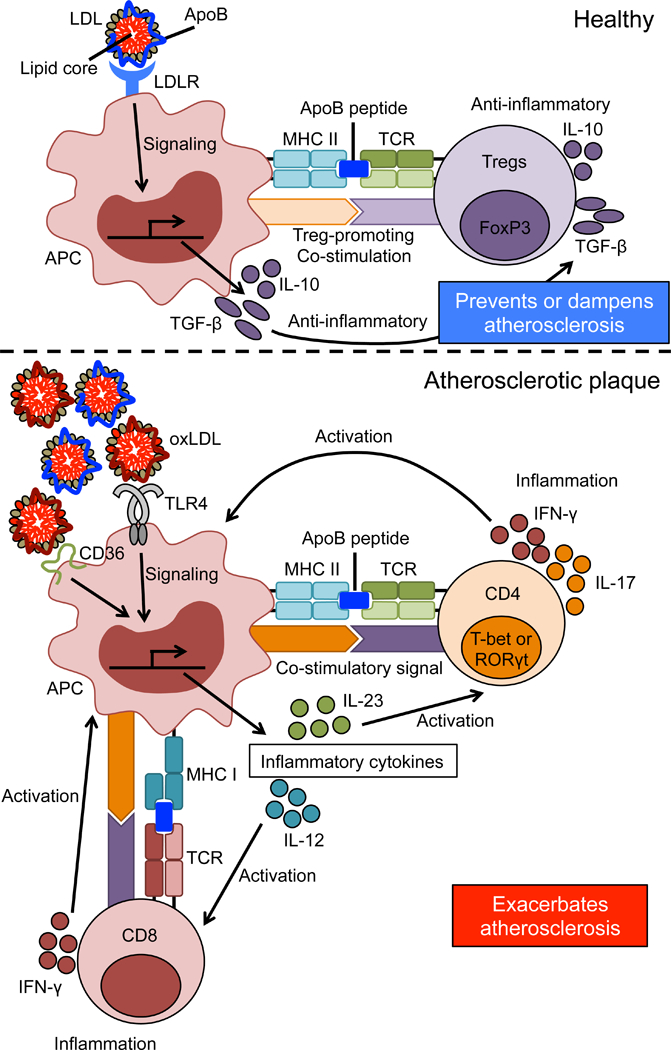Figure. Adaptive immune responses in atherosclerosis.

Top: In healthy individuals, LDLR on antigen presenting cells (APCs) recognizes and takes up LDL, inducing production of anti-inflammatory cytokines. Self-reactive Tregs recognize ApoB peptides presented by MHC-II on APCs in the context of co-stimulatory molecules that promote Tregs, which also produce anti-inflammatory cytokines production, thereby preventing or dampening atherosclerosis.
Bottom: Modified and oxidized (ox)LDL accumulates in atherosclerotic lesions and is recognized by receptors like TLR14 and CD36 to induce transcription of inflammatory cytokines like IL-12 and IL-23. CD4 T cells recognize ApoB peptides in the context of pro-inflammatory cytokines and strong costimulation, which induces Th1 (T-bet+) and Th17 (RORγt+) T cells. Their production of IFN-γ and IL-17 exacerbates atherosclerosis. Now, CD8 T cells also recognize ApoB epitopes presented by MHC-I and exacerbate inflammation by producing IFN-γ. TCR: T cell receptor, TLR4: toll-like receptor 4.
